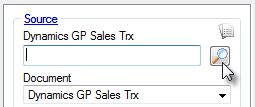
With StarShip, you can ship against MS Dynamics GP Sales Trx or Customers. These are the basic steps to process a new shipment from a Sales Trx in StarShip. You can switch between Parcel and Freight shipments on the toolbar.
You can select a sales transaction by scanning the number or by typing
it directly into the Dynamics GP Sales Trx field. You can also click the
magnifying glass to use the Search/Batch
Processing functionality to search for and process one or multiple
Sales Trx.

Use the available filters to narrow down and sort your search results. Click Add Filter and then provide specific criteria. For certain filters, like Batch ID, Document Type, and Shipping Method, you can select from a list of existing values :
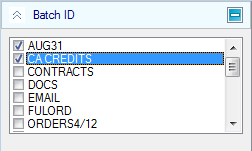
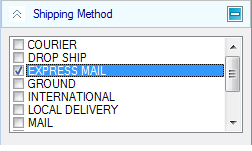
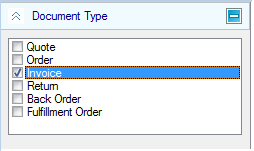
Other available filters are Customer ID, Document Amount, Document Number, Order Date, PO Number, Request Ship Date, and Ship To Address fields.
After selecting the Sales Trx(s), you can then process one or multiple Sales Trx automatically OR you can load a Sales Trx and enter or modify shipment detail.
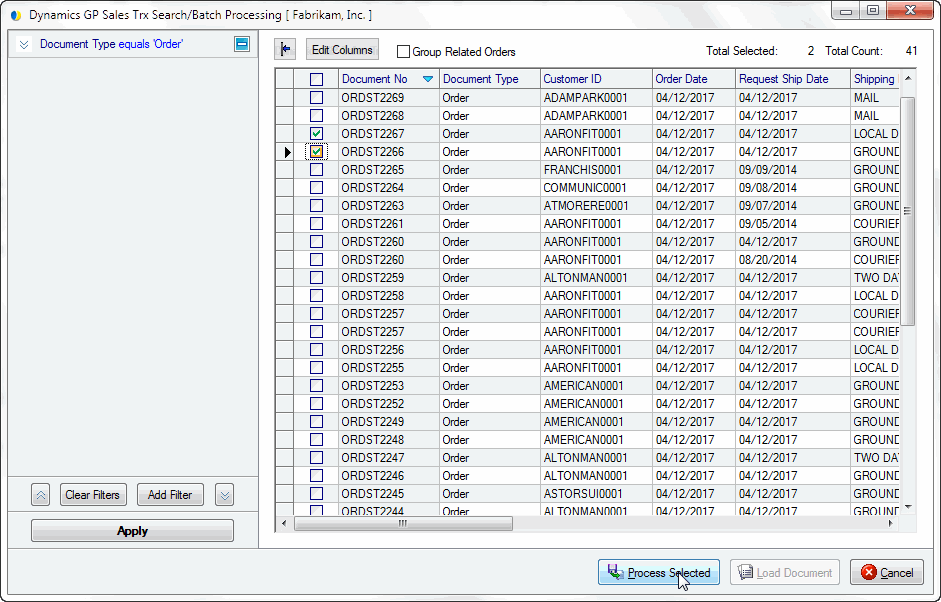
Process Selected : If you are processing one or multiple orders, StarShip will process the shipment(s) according to the batch settings you select. For more information about batch settings, click here.
Note that you can select the GP Batch ID to be assigned on write-back. Imported batches can be viewed using Tools > Imported Batches.
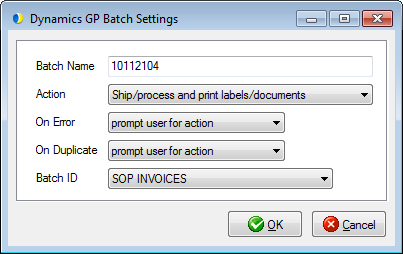
OR
To select a single Sales Trx double-click the line (or check the box and click the Load Document button) to load the order into the Ship screen. If any line items have previously been shipped, StarShip retrieves related freight information (if applicable). If items have not been shipped before, or line item detail is not mapped to Dynamics GP, you may need to enter additional information, such as freight class. The following sections describe aspects of common shipment details you may enter. For example, packing the line items in the shipment into packages.
About packing line items
You can pack the shipment manually, by clicking the Packaging View button. In the Packaging View, drag and drop the items into first level packaging (for example, Box). See example
Line items can be packed using
learned or created packaging scenarios (added or modified in Maintain
Inventory). If you've shipped any of the items before, StarShip
retrieves packaging scenarios and automatically packs those items
into first level packaging (boxes, cartons, etc). By default, auto-packing
based on packaging scenarios is not enabled. You can enable this setting
in Setup > Preferences under Shipment Processing (for Freight or
Parcel); check the option, "Automatically pack items based on
packaging scenarios." Control how items are packed using the
related Auto Pack Preference setting below it.
Note: StarShip supports mixed items in one box. However, Starship can
only learn packaging scenarios for future shipments when you have
one type of item in one package. The auto-learning of packaging scenarios
is optional and can be disabled.
Loose items imported from the MS Dynamics GP Sales Trx can be packed automatically into a default box. StarShip will pack loose items into default packaging based on the Preferences setting, "When importing orders, pack all loose items into a default package." This is the default setting; if you want to change this default, uncheck this setting in Parcel or Freight Preferences setup under Shipment Processing. Note that this setting is worded differently for Freight Preferences because it takes pallets into account.
If you add items from StarShip inventory, these can be automatically packed into the first, currently selected, or a new default box. They can also be left loose. This is based on the Preferences setting, "When adding items from StarShip inventory, place loose items in ..." The default setting is first package.
Items can be packed using the Shipping Assistant, if it is enabled in Preferences setup, either manually or automatically (based on learned packaging scenarios).
More Information : Line Items
Enter Package Weight
In the Packaging View, enter the weight of the first box or use an electronic scale to read the weight. Click Next to navigate to the next package and repeat the weighing process. If you have the Print on Next feature enabled in Parcel Preferences setup, shipping labels will print for each package as you click the Next button or press Enter. Note : Though the label prints, the shipment is not processed until you press Ship/Process (F5).
Enter Packaging Details
Packaging
For Parcel shipments, you would enter package detail
for existing packages. Remain in the Packaging View and navigate through
the packages to weigh them or add package level details on the Packaging
tab.
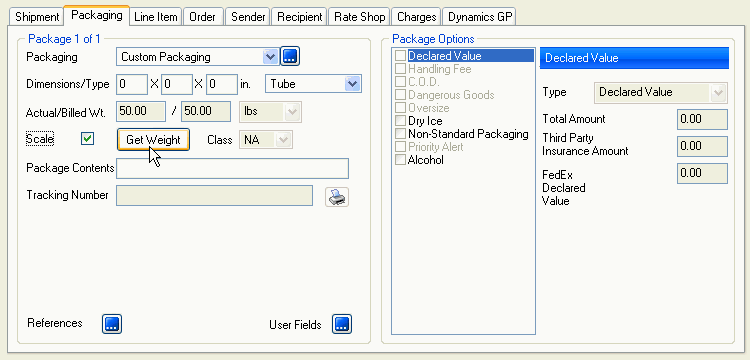
BOL (Freight Shipments)
For Freight shipments, StarShip populates the bill of
lading using line item and packing information. Bill of Lading settings
in Freight Setup allow you some flexibility regarding
how StarShip converts item packaging information into the bill of lading
body. Typically, similar items with the same class are grouped under one
general description. The commodity description may be edited on the BOL
tab.
You can also manually enter the BOL.

Freight Billing Info
Enter or modify the freight billing information of the shipment, if necessary.
Shipping Method (Ship Via)
Select the shipping method - Carrier and Service - on the Shipment tab, and enter shipment detail that was not populated. You can also Rate Shop to select a carrier and service.
Rate the Shipment
Rate the shipment with the currently selected carrier
by clicking Rate from the File menu or by pressing Ctrl + Alt + R. To
rate shop, click the Rate Shop button in the toolbar or press Ctrl + Alt
+ S. Select a carrier from the Rate Shop tab. For more information,
see Shipping Process > Rating in the StarShip
Help.
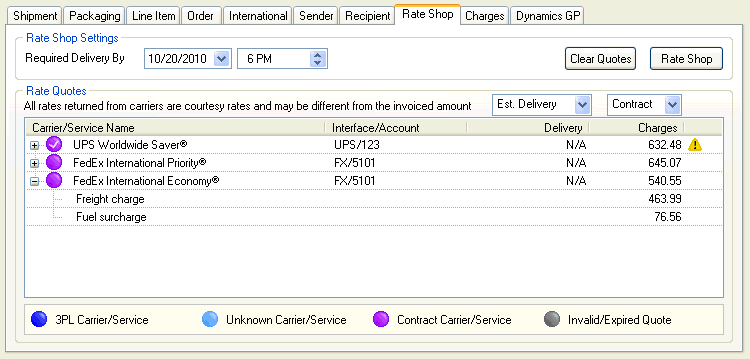
Batch Processing
If Batch Processing is enabled, StarShip can assign
a Batch ID on the Sales Transaction when the shipment is saved. On the
Dynamics GP tab, select a Batch ID from the drop-down list, or you can
choose not to assign a Batch ID. You must have previously created
the Batch ID in Dynamics GP in order for it to appear in the drop-down
list.
Your future shipments will use this batch until you change it, or the batch
is deleted in Dynamics GP. If you delete the shipment, the batch selected
in Financial System Interface Setup > Batch
ID Write-Back is used.
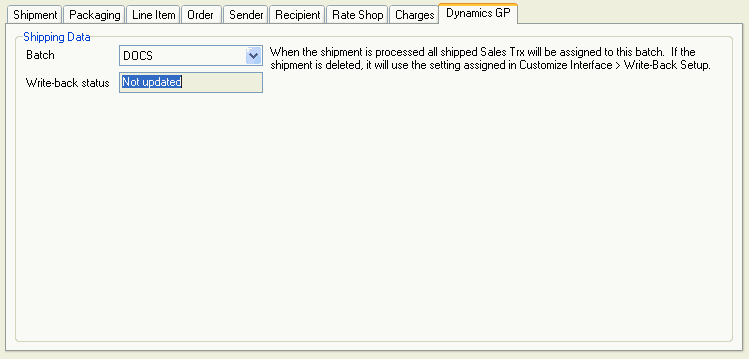
Ready Date and Time
Enter the shipment's Ready Date (and Pickup Time, for
Freight) on the Shipment tab.
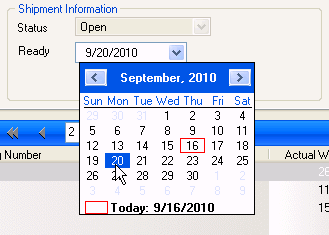
Save the shipment
There are two options for saving shipments.
Save: To save a shipment without
processing it, select Shipment > Save, press Ctrl + S, or click
the Save button on the toolbar. This action saves the shipment as
a draft, but does not process the shipment, request pickup from the
carrier, automatically print shipping documentation, or write back
any information to Dynamics GP. The shipment is essentially saved
as a draft so you may open it and make changes.
Ship/Process: To process a
shipment, select Shipment > Ship/Process or select the Ship/Process
button from the toolbar. The shipment is tendered to the carrier.
If you set up the bill of lading and/or labels to print
automatically, they are now generated.
Shipment Status
Once a shipment is processed, the Shipment
Status changes from Open to Processed on the Shipment tab. If needed,
the status can be changed back to Open; doing so will reverse write-back
to Dynamics GP, void tracking numbers (for Parcel), and pickup is cancelled
for the carrier (if supported).
Updates and Write-Back to Dynamics GP
After you Ship/Process a shipment, StarShip updates Dynamics GP Sales Trx with the freight amount, notes, and batch IDs, as you configured in Write-Back Setup.
If enabled in Write-Back setup, StarShip writes the freight (including the freight tax calculation) back to the Freight field on the Sales Trx.
Notes write back to the Note associated with the Sales Trx.
StarShip writes the tracking numbers to the table of tracking numbers associated with the Sales Trx.
The Batch ID is updated for deleted shipments.
The Shipped Date is written back to the Actual Ship Date field on the Sales Trx.
See also :
For in-depth information about processing shipments, see Shipping Process in the StarShip Help.